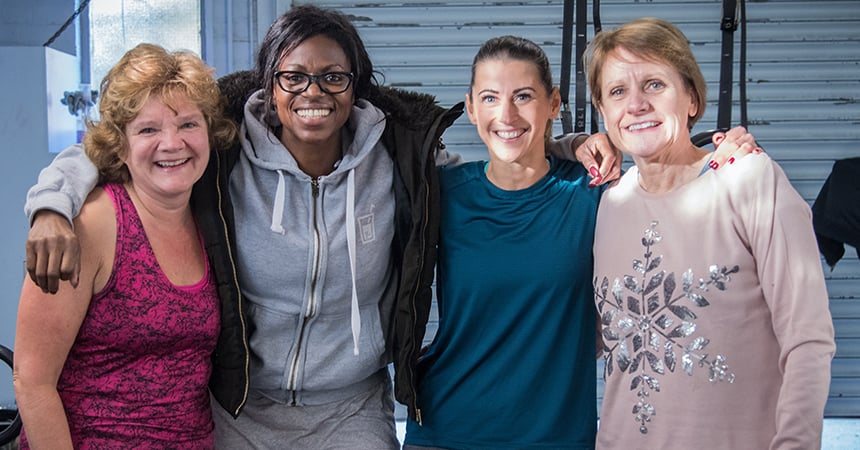
Most clients that start out at the DVCC ask whether the program includes a meal plan. Well, the simple answer is no. We don’t believe in meal plans. And we can’t stand the word “diet”. What we do is provide a sustainable way for our clients to instill healthy eating habits into their lives for the long term.
Take a look…
++++
This is the most common question we get asked when clients join the DVCC for the first time. Like we said before, the short answer is no, we don’t believe in meal plans.
Although, it’s only logical that people will ask. After all, they’re with us to lose weight and get in shape. They’ve come to expect that the only way to do this is by going on a strict diet. But, here’s the thing about strict diets – they’re too easy to break. Or rather, too hard to stick to.
Your health and fitness is for life, a marathon and not a sprint. We don’t provide you with a diet to follow or a meal plan to stick to because:
They are hard to follow, take up time, are highly restrictive and demotivating.
Who has time these days to follow recipes and rules like the below:
Breakfast – 7:00am
Eggs, poached
1 x cup steamed vegetables
1 x cup black coffee
1 x glass water
Morning snack – 10:00am
1 x snack bar
1 x handful dried fruits
1 x glass water
Lunch – 1:00pm
Skinless chicken (4 oz.)
2 x cups green salad
1 x cup seeds
1 x glass water
Afternoon Snack – 4:30pm
1/2 cup fresh fruit
1 x tsp omega 3 fish oil
1 x glass water
Dinner – 8:00pm
3 oz. steak
1 x cup steamed veggies
1 x glass water
While you might like the sound of that (seriously?) in our experience, what usually happens after a couple of days is the following:
You may have the best will in the world, but meal plans are hard to stick to. We have kids to feed, friends to see, parties to go to… the diet gets sidelined.
Life gets in the way – and that’s normal.
What usually happens when you break your diet is that you break it with a vengeance. So, your 2 or 3 days of sticking to the plan, followed by 2 or 3 days of sticking your middle finger up at it is worse than no plan to begin with.
Meal plans are meant to be temporary and if you follow it too long, it can have a detrimental effect on your health.
Following a strict diet should always and only be a means to an end. If you really need to slim down before your holiday, to get into your wedding dress, or on your beach holiday.
Staying on a rigid weight loss diet for too long could result in real problems and eating disorders.
Eggs for breakfast again! AHAHAHAHAH! Eating the same thing every day is truly the stuff of nightmares. Diet plans are not sustainable. You don’t feel better and you feel like you’re losing your mind eating the same insipid food, day in, day out.
You might see some short-term results, but living this way sucks. Trust us, you’ll never be able to look at lettuce or skinless chicken again.
What happens after that? You decide that diets aren’t for you and healthy eating sucks.
You miss out on your chance to enjoy really great and healthy food and strengthen your body and mind.
They focus on “nutrients”. But the thing is, real people don’t eat “nutrients”. Real people eat food. We eat meals, we gather together and break bread. It’s a large part of our culture. We don’t try to measure things precisely, like a scientific formula. Unless you’re a professional athlete or bodybuilder, you don’t need to get so anal about your food. And you’ll stop enjoying it if you do.
Instead of “grams” of things, we eat things – foods – like:
The main message here? If you want to get better about the food you put in your body – don’t get weird about it and start measuring it – get real.
Unless someone is paying you to count your almonds or calories, then don’t. And under no circumstances should you pay someone else the pleasure of doing it!
Just think about what you’re eating and how you can make it better. Healthier and tastier.
All that needs is a little bit of mixing up.
Make some small changes to what you already normally eat and enjoy, taking it one step at a time.
Instead of thinking of food as “good” or “bad”, start to think of it as a spectrum.
When you start to think of it as a spectrum you start to think about:
Think of the game – how can I make my food a little bit better?
When is it easy to do and when is it harder?
For example, when you’re at home, at work, or travelling.
Here goes:
Step 1
Imagine that your regular breakfast is a milky coffee and a Danish pastry or chocolate croissant. You probably already realise that’s not the best way to start your day.
Especially if you’re eating it on the run, on your way to work.
You’ll probably find that you get indigestion from eating on the run and maybe even spill your coffee in the car… You can do better.
Let the game begin:

Step 2
The meal transformation game begins:
OK, so maybe you still have to eat it on the run, but you’ve already made a great start here. Well done!
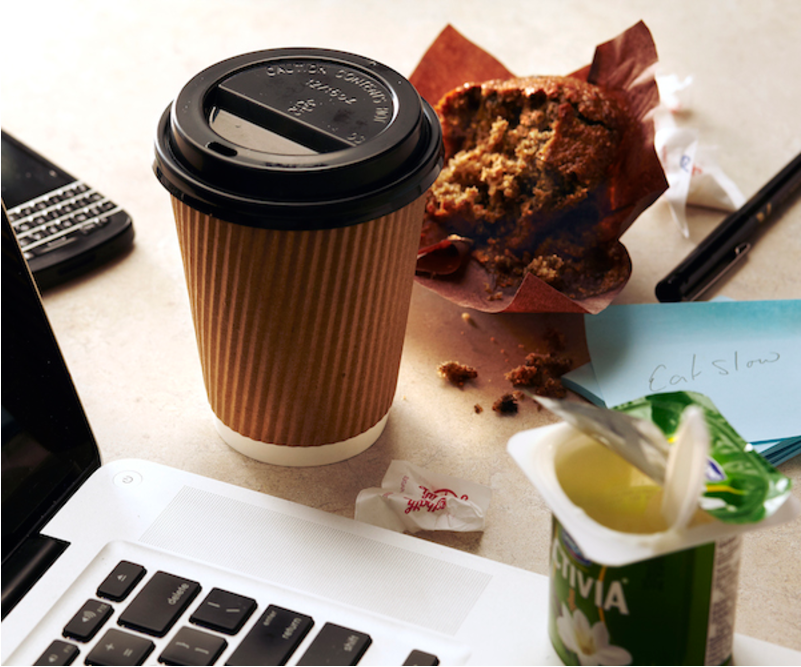
Step 3
Let’s move things up a gear:
OK, so you’re still checking your smart phone and reading your emails, but, we’re getting better here.
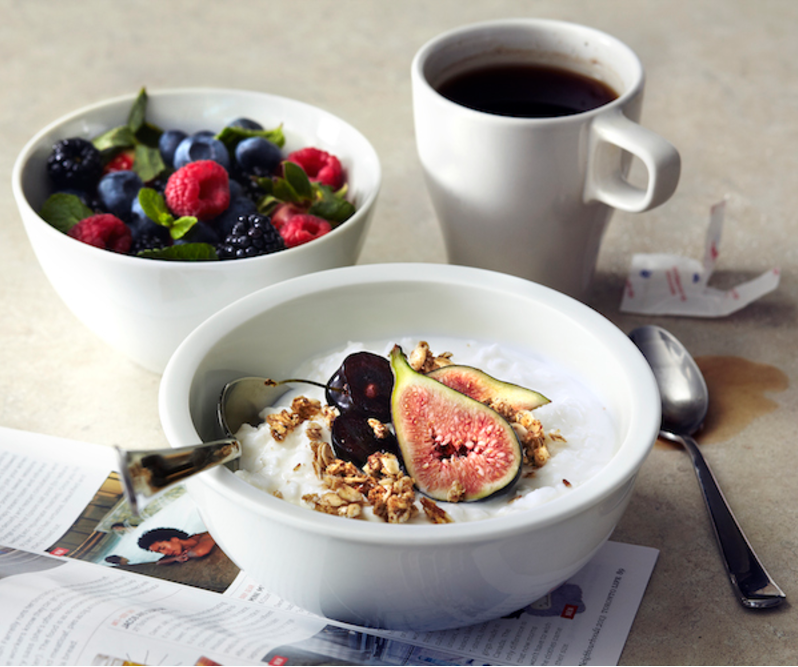
Step 4
Now that you’re getting so good at this, let’s take it up a notch further:
Ahhhh.
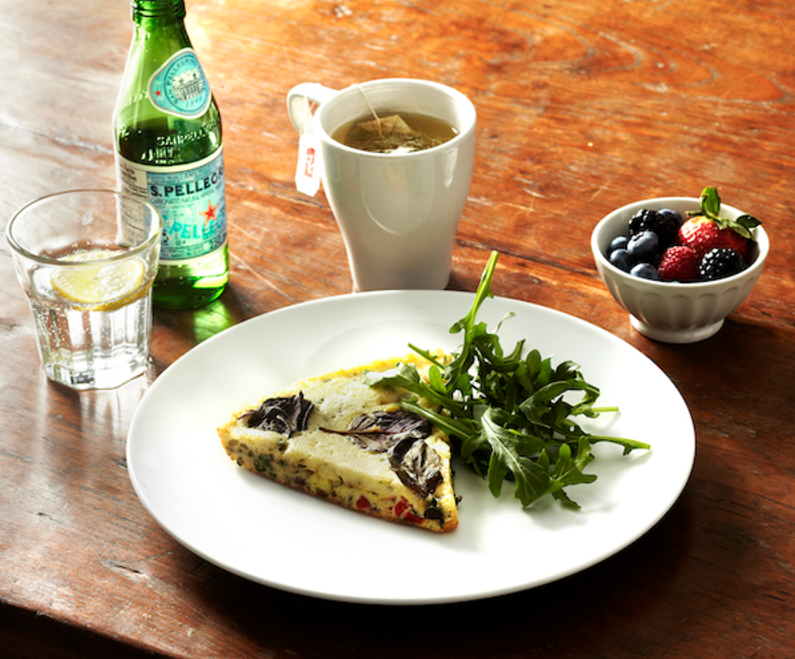
Step 1
If you’re the kind of person who eats their lunch at the desk, standing up or on the run, the idea of a full-on sit-down lunch might seem impossible to you.
And, eating it slowly – forget it!
But if you’re suffering from fatigue in the afternoon or stomach pains, heart burn and indigestion, let’s play this game as well.
Let’s do the lunch transformation!
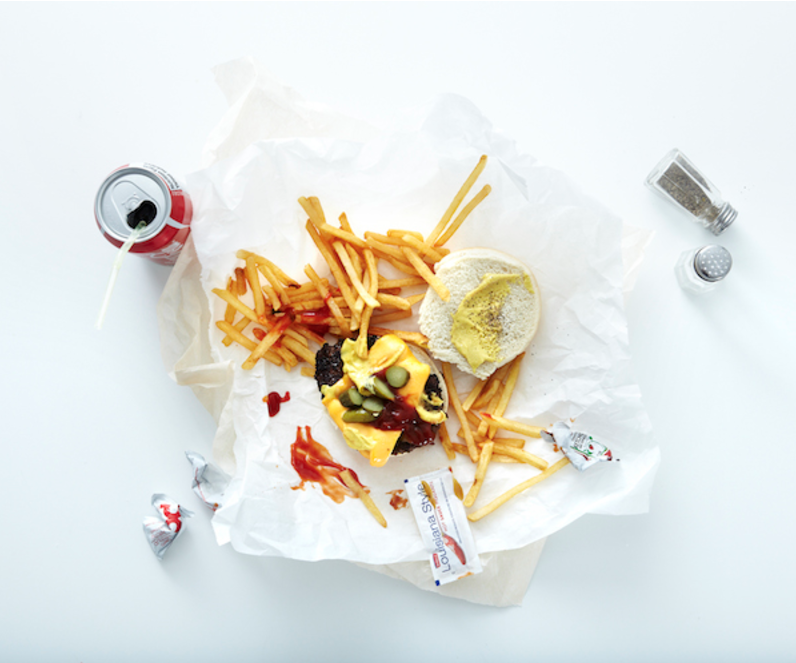
Step 2
If your lunch resembles the above photo, then it won’t be hard to improve it just a little bit:
At your computer? Well, OK, but that’s better than in your car.
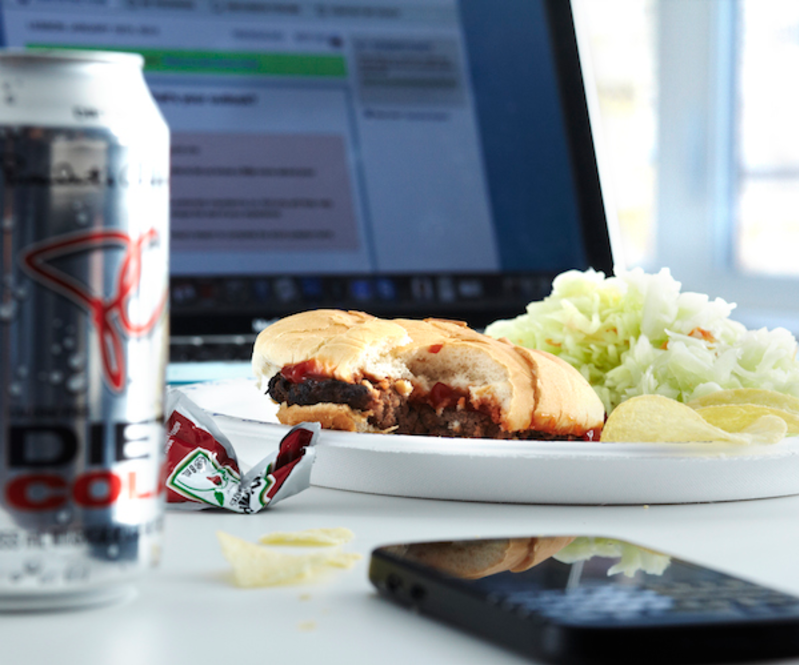
Step 3
You’re getting the hang of this now. Let’s try:
Now that your lunch looks and smells better, you decide to sit down and eat it with your colleagues. Sociable and healthier. Two in one.
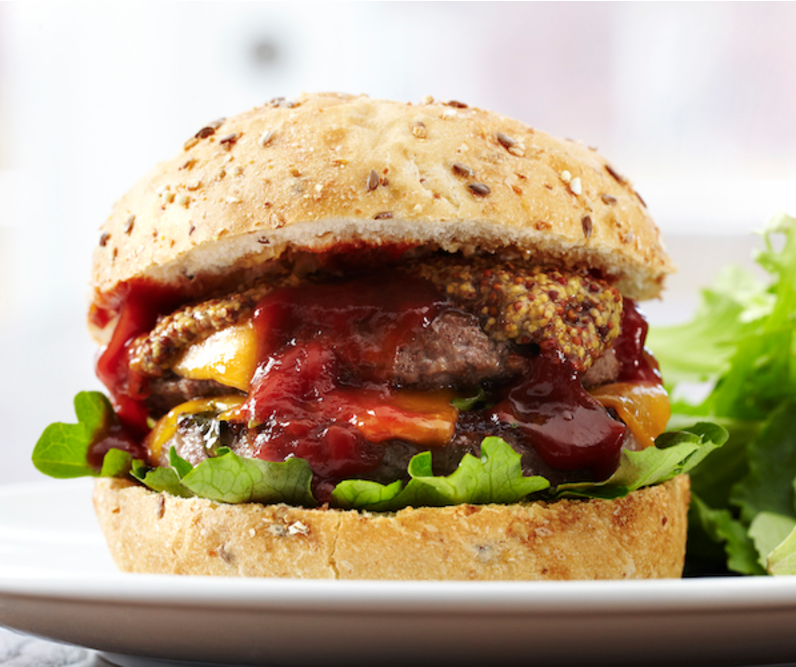
Step 4
Just a burger. No bun. No fries and a nice big salad.
No eating at your desk, you take a stroll outside to the park.
You get some fresh air while eating.
The fizzy drink’s been swapped for a glass of water.
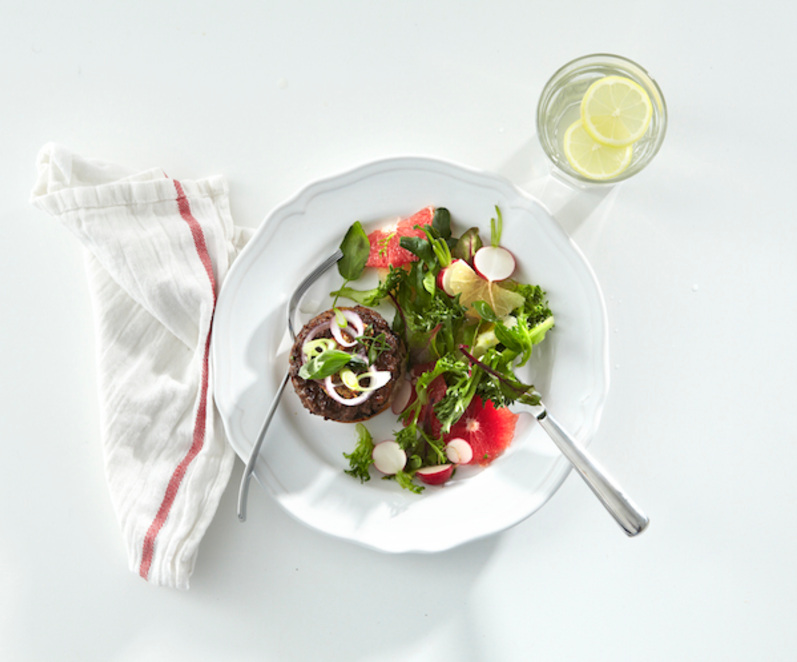
Step 1
It’s 8pm. You just get home from a long day of work and running here, there and everywhere. Ready meals and hot dogs are about as good as it gets.
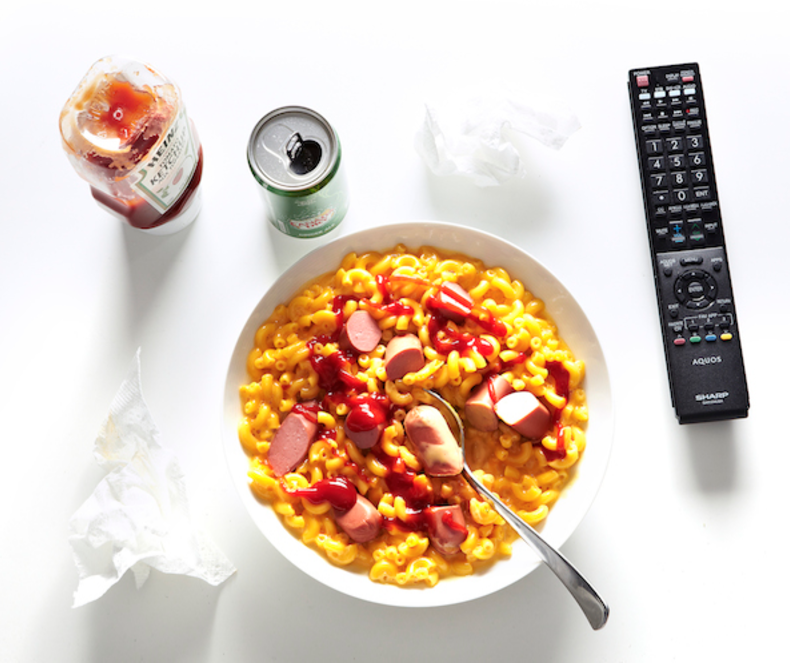
Step 2
Let’s do this a little better.
If you’re still thinking about work and stressed by the day, keep your beer. If it makes you feel better.
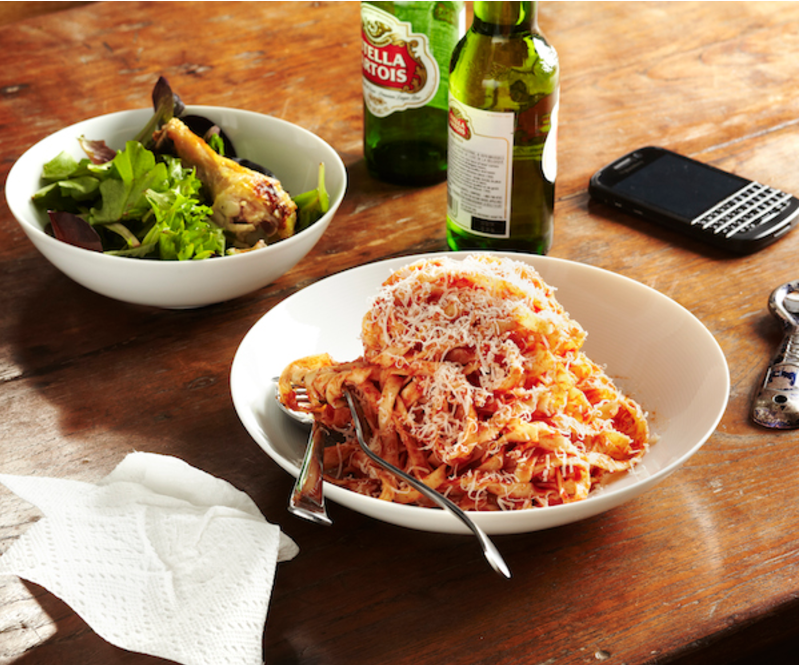
Step 3
This is starting to look good now.
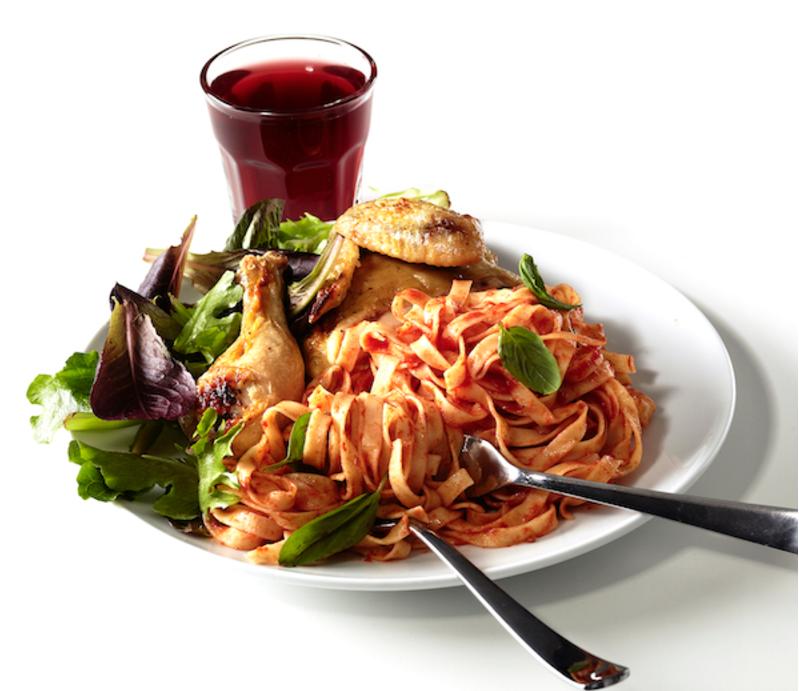
Step 4
Up to level pro now…
Now you’re getting really fancy.
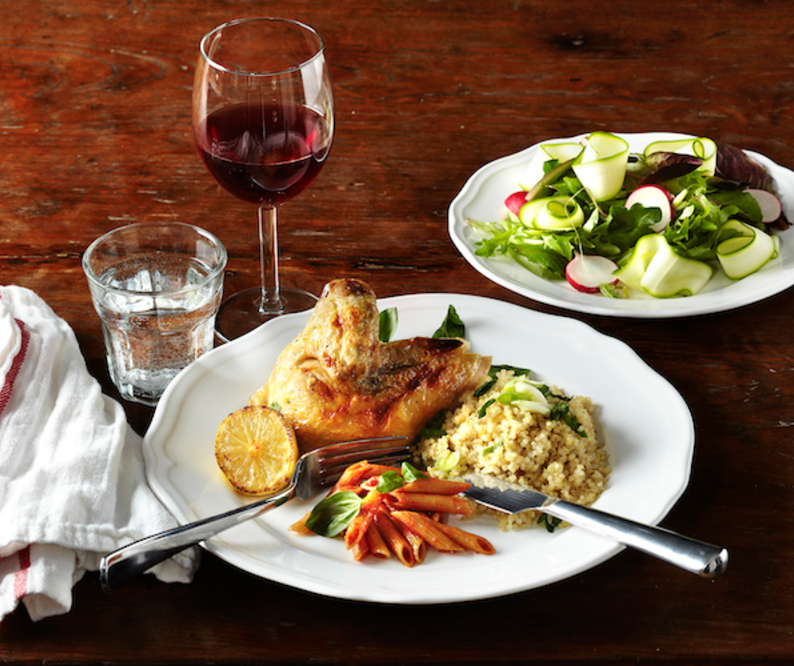
It’s about being conscious of your habits and starting to improve them.
If you’re at step 1, aim for step 2 (or even 1.5).
If you’re at step 2, try step 3 a couple of times a week.
If you’re at step 3, then you could probably just stay where you are.
Even if you never get to stage 4, or you only get there sometimes, you’re still aware of what healthy eating looks like.
And that’s OK.
How far your progress through the steps is up to you. It’s your game and it might change over time.
If you’re wondering how it’s possible to eat so well when you’re out of time, then the first secret you need to know is preparation.
Try it.
It’s a simple concept.
Plan your food in advance.
That will make eating healthier so much easier.
You’re also making decisions when you’re not hungry and you can do it with a clear and sensible head.
You don’t have to do all these things, but making sure you have ingredients and good food at hand will make life a lot easier.
Experiment and find what works best for you.
It won’t be perfect, it won’t be measured, it will be real and easy to implement in your everyday life.
That’s OK, too!
Some people like having strict rules to stick by and find that it makes weight loss easier. But, make sure that if you follow a meal plan it’s for the short term only.
Don’t let it convert into a long-term thing.
Meal plans should always and only be temporary and help you work towards a short-term goal.
Try keeping it real.
Try to make your meal plan fit around your life and not the other way around, so that it will be easier to stick to.
Most people living in the real world will find that their meals range somewhere between step 1 and 3. And that’s OK.
Your health is a marathon, not a sprint.
If you want to achieve amazing, superhuman athletic results, then you’re going to have to make more sacrifices, but ask yourself if that’s what you really want.
Getting very fit and very sleek, comes at a price.
So, just be sure that it works for you.
If your meal plan is making you feel:
or anything else negative and unproductive…
…and if this meal plan makes you feel like you’re:
…then try the steps 1-4 instead. You can go up and down, you don’t have to keep going up. That can be pretty tiring.
What food do you eat?
What step are you on?
What step would you like to be on?
What’s a realistic goal?
Can you raise your step 1 to step 2?
Or, if you’re mostly step 3 but end up dipping down to steps 1 and 2 more often than you’d like…
Start with one meal and work on that first.
Leave one meal at level 1 or 2 and focus on breakfast, or lunch instead.
Improve one meal every day.
Think about:
You don’t need to do all of this at once! But try a couple of things consciously every day with at least one meal.
Now your breakfast is great, it’s time to work on lunch. Or if your lunch rocks, then think about how you’re starting out your day.
Or, let’s say, you’re doing pretty good with adding protein, now work on cutting back on the sugary drinks or alcohol.
Add more veggies, cut back on fried or processed foods…
Have some patience.
Whatever you find easier to eat healthier, do more of it.
For example:
Remember, there is no right or wrong way of eating – you must do what works best for you.
Meal plans might look at what you eat – but they don’t usually look at how you eat.
So, think about both things, as they’re both equally important.
Meal time should be YOUR time. When you’ve prepared delicious and tasty food just for you, you should be able to enjoy it.
Only you are in charge of what you put in your body, no one else. Don’t feel like you have to do something because someone else tells you too, or eat things because you feel guilty saying no.
If you want to dine out, don’t forbid yourself, but make more sensible decisions.
Think about your health for the long-term. Not just a few months or weeks. Think about eating healthily for life.
If you can make your food just a little bit better today, how will you do it? Shoot for small changes and don’t be too hard on yourself.
How about starting the “meal transformation game” right now? Can you start playing today?
If you’re looking for guidance and just a little bit of help, we’ll be taking clients on our new program DVCC Coaching by Mark & Steve Gray.
Spaces will be limited, so if you’re thinking about it – be sure to sign up today!
Just joining the lists gives you the chance to get access to coaching advice before anyone else and – even better than that? You’ll save a whole 30% OFF the program cost!

The big box impersonal gyms leave you feeling awkward, and lacking motivation to lose weight and get fit.
The Training Gyms is for men and women who want to lose weight, get fit but don't want to do it in a normal big box gym.
We know it's important. We just don't know where to start.

Bedford | Milton Keynes | Northampton | Hitchin | St Albans
